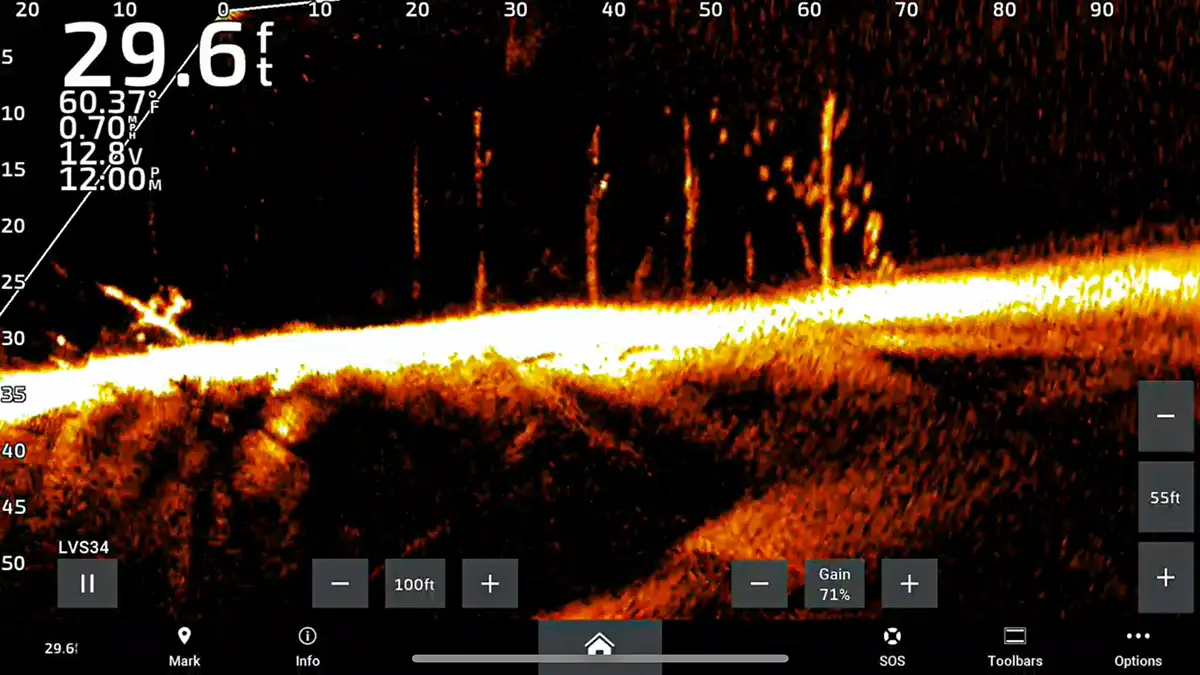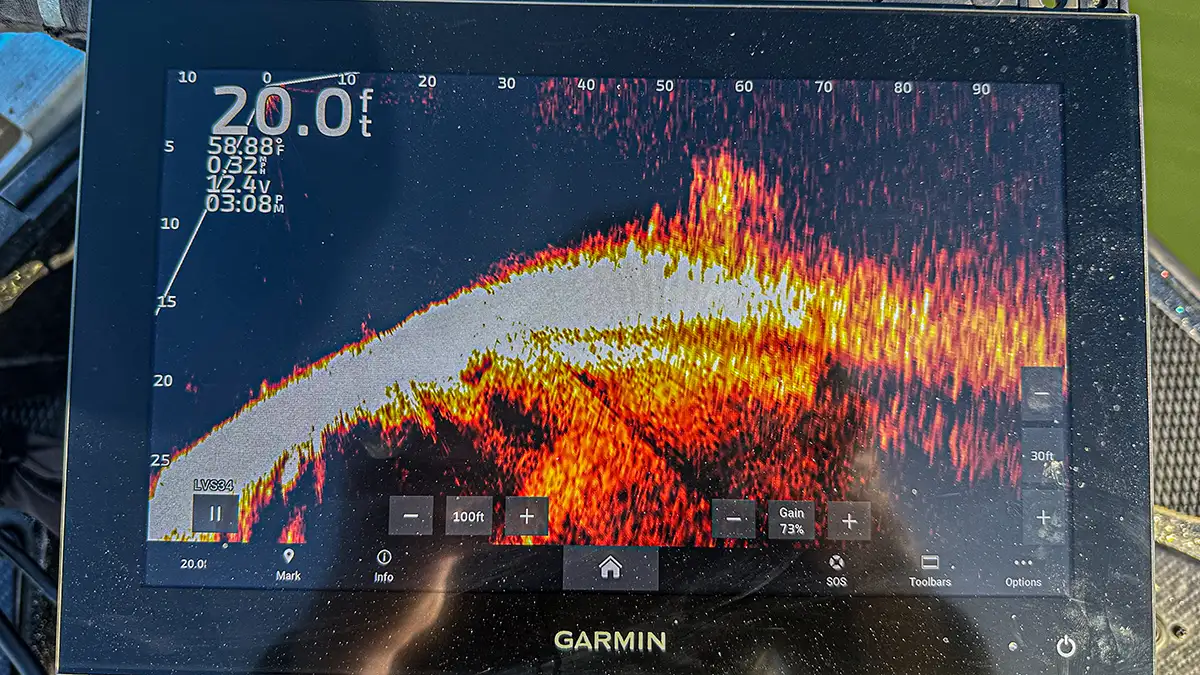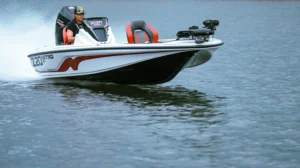Though I have been using it longer, I’ve become completely infatuated with forward-facing sonar over the last year and a half. My love for this new technology started during my senior year of college, and since then I’ve dedicated countless days to learning and understanding everything these units can tell you. This has been no easy task, however I’ve slowly started to piece together all the little intricacies associated with forward-facing sonar.
Throughout this journey I’ve learned a few different ways to identify the size and species of fish displayed by forward-facing sonar. This includes paying attention to the sonar return, as well as the fish’s behavior and positioning. These three things can tell you a lot about what’s happening underneath the water, however it still requires an ample amount of fishing time to become proficient with this technology.
SONAR RETURN
One of the first things I figured out while using forward-facing sonar is the importance of the sonar return. Fish finders send out an acoustic signal (sound), which bounces off of fish, structure, or any other underwater object and shows up as a “return” on the unit’s screen. These returns look differently, based on the density of the object or fish it hits . You can determine size and species of fish by both the size and density of your sonar return.
Bass are typically recognizable by their distinctly bright sonar return, showing up as a bright dense dot. You often are able to distinguish the fish’s tail and direction of travel based on size.
Carp, catfish and other species of fish often have a fuzzy return. This can be described as a big fuzzy blob compared to the smaller, dense circle created by bass. If you encounter a larger blob it probably isn’t a bass, unless you’re in parts of the country such as Texas or Florida where you may encounter 10-plus pound largemouths. Even so, these fish will still show a solid bright return, regardless of their size.
FISH BEHAVIOR
Paying attention to fish behavior is another super important aspect of determining fish species and size. Bass are predatory animals, and they act like it . Their movements can be described as fast, deliberate actions with the purpose of catching prey.
One of the best ways to determine if a certain fish is a bass or not is by simply casting at it. No matter how lethargic or pressured a bass is, it will almost always react to your bait. This doesn’t mean he’ll bite it, but he will give you a hint on whether or not he’s a bass.
Bass typically have instinctive reactions to a bait. These can be seen as darting up to your bait, quickly changing speeds, or simply cruising through the water column at a fast rate of speed. These are all dead giveaways that the fish you’re targeting are bass.
Other species of fish such as catfish, carp and gar will still react to your bait, however it looks different on forward-facing sonar. These fish typically pursue the bait at a much slower rate, rarely if ever changing speeds or direction. Largemouth, spotted and smallmouth bass are faster and more agile than these species, however there are other species that mimic this fast paced movement on forward facing sonar. This is where paying attention to fish positioning can really set you apart from other anglers.
FISH POSITIONING
Positioning refers to how fish align themselves around structure, bait and other fish. Striped bass, hybrids and other species of predatory fish can often mimic the actions of a bass underwater. One of the best ways to tell these fish apart is by paying attention to where they are in relation to the structure. Striped bass, white bass and hybrids all travel in exceptionally large groups. These schools can be upwards of 300 fish at times, and they often suspend up off the bottom.
This is different from your typical largemouth, spotted or smallmouth bass, as the larger schools of bass typically position themselves on the bottom. These large schools of largemouth spotted and smallmouth bass can typically be found around main lake ledges, humps and points that get hit by current. Striped, hybrid and white bass however will suspend in the middle of the channel, with their location often being unpredictable. Largemouth, spotted and smallmouth bass will also suspend in the channel on a number of fisheries, however they typically don’t travel in groups much larger than 10 fish.
Seeing how other species of fish relate to cover is another way to determine the type of gamefish you’re dealing with. Once again, bass are predatory animals, so if you see lots of baitfish, bluegill or other types of prey relaxing around cover, there’s likely not many bass in the area.
Bass are territorial creatures, so they often patrol whatever piece of cover they’re relating to. They often suspend above or cruise along the side of their selected cover, waiting on an easy meal to present itself. These fish are typically the easiest to get to bite, however some bass position themselves tight to brush, reluctant to come out and chase a bait. These can be seen as slow moving, bright dots located along the bottom or next to brush. These fish are best caught using slow moving bottom baits such as a jig or Carolina rig.
TIME ON THE WATER
Last but certainly not least, time on the water is likely the most crucial component in becoming proficient with forward-facing sonar. It’s no secret that forward facing sonar helps anglers catch more and bigger fish than ever before. While this may be true, learning how to use it effectively is no simple task. You can read this article as many times as you’d like, but if you don’t go out and spend the time experimenting with your electronics, you’ll never become proficient. However, once you understand sonar return, fish positioning and fish behavior, you’ll have no issue determining the size and species of fish you’re targeting on forward facing sonar.
















